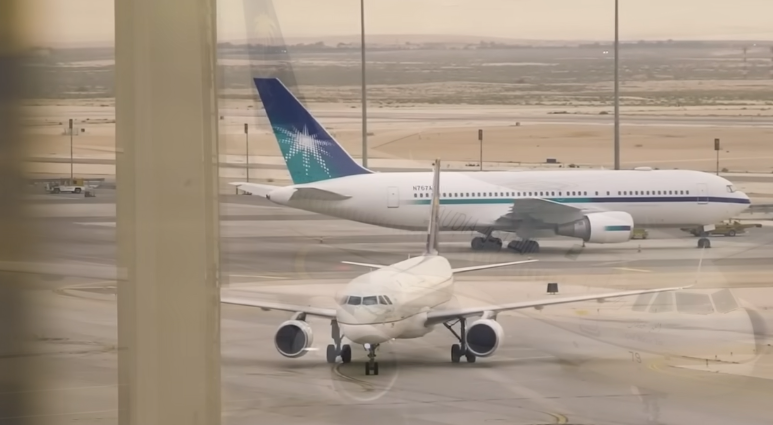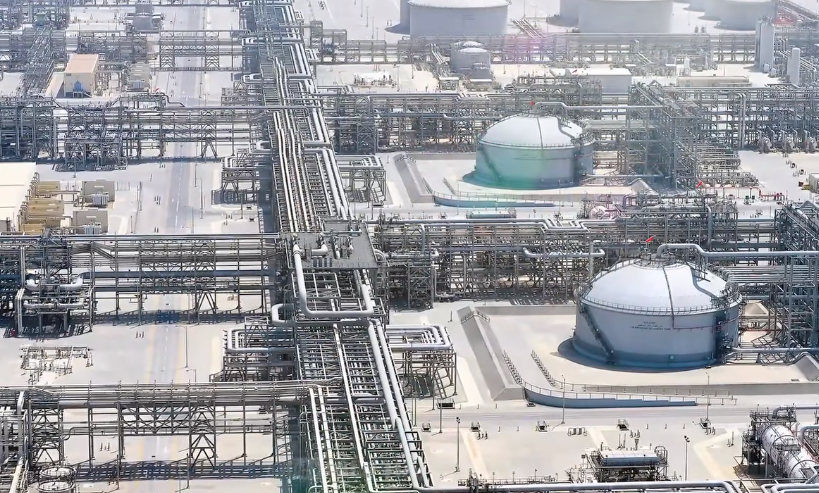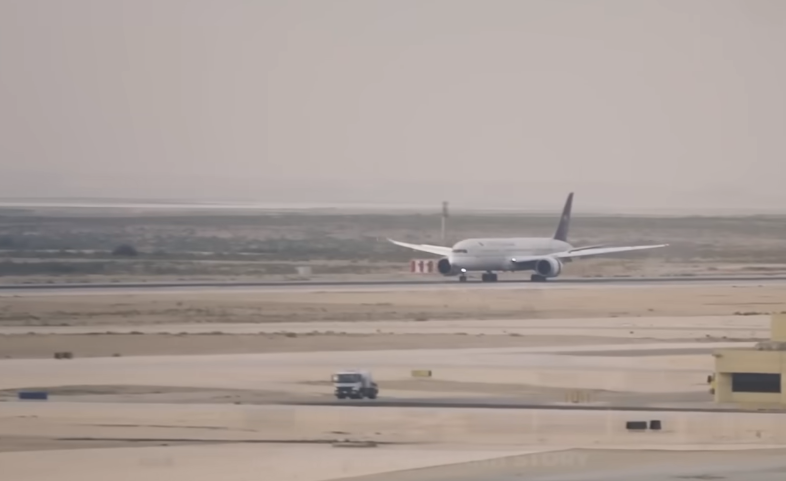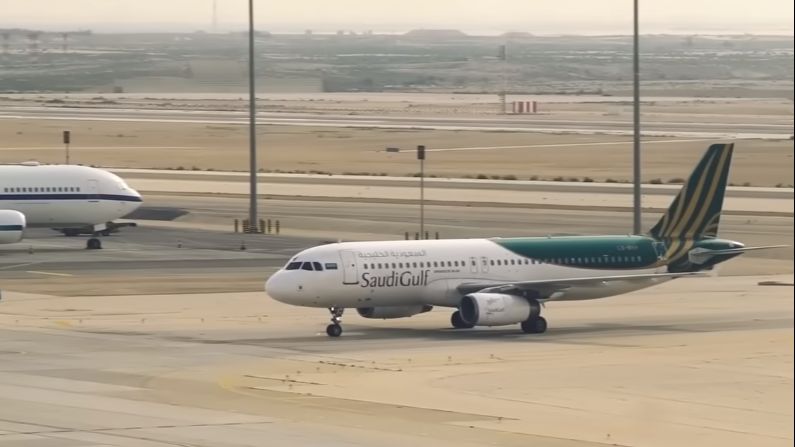Not to mention how far it is compared to the area of Singapore, it is larger than the area of this country and a country close to Saudi Arabia, that is Baranh, then this airport is also larger than the area of Baranh and the area of this airport is also larger than the entire area of Phu Quoc Island in our country. To make it easier to imagine, the entire Phu Quoc Island now is just an airport, then you can see how large the airport of Saudi Arabia is. Why do we need to build such a large and gigantic airport. And you will be even more surprised when the number of passengers at the world's largest airport in a year is only a very small fraction compared to the airports in Vietnam such as Tan Son Nhat or Noi Bai. Welcome to today's story.

This airport is located in the city of Daman in Saudi Arabia and is located more than 30 km northwest of the city named after the former king of Saudi Arabia.
This is one of the four official international airports of Saudi Arabia, located in the city of Daman, this city is the center of the oil industry in Saudi Arabia. Daman is located in the east of this country on the shores of the Persian Gulf, this is the capital of the eastern province and one of the largest cities in Saudi Arabia. Now when it comes to the world's largest airport, people will mention the name of the king. Salman bin Abdulaziz Al Saud is the king of Saudi Arabia from 1982 to 2005, a period of turmoil and his reign during this period was also like that.
And that is one of the reasons that helped this airport to be formed, that is in 1990, the Iraqi army under Saddam Hussein invaded Kuwait, bringing the Iraqi army at that time, the largest army in the Middle East, close to the border of Kuwait and Saudi Arabia. The king of Saudi Arabia at that time agreed to receive the coalition forces led by the United States. This decision later faced many objections, including from the Saudi Arabian people. They did not believe that foreign troops should be present on the territory of Saudi Arabia. And this is a reason to oppose the royal family in Saudi Arabia by the uprising forces, and so the world's largest airport was built during his reign. The reason for the world's largest airport to be formed is also related to the political views of the king of Saudi Arabia at that time.

Why such a large airport?
Because before this airport was officially used for commercial purposes, it was simply a military airport. It was built and continuously expanded to serve the Gulf War in the early 90s as we mentioned. This airport began construction in 1983, the basic infrastructure was completed by the end of 1990, allowing the coalition forces to use this airport as a base. However, the coalition forces were very large, so they also needed additional new facilities, and the airport was expanded to include maintenance facilities in aircraft storage areas, as well as a large tent area.
In fact, this airport is larger than the entire neighboring country of Baranh. The Gulf War that year was fierce, sometimes called the Gulf War or Operation Desert Storm. The conflict between Iraq and the coalition of 38 countries led by the United States and approved by the United Nations to liberate Kuwait, and one of the closest allies of the United States in the Gulf War was Saudi Arabia. The reason for this event is that Iraq invaded Kuwait in August 1990 when Iraq believed that Kuwait was slant drilling into their oil wells on the border with Iraq. The consequence of the invasion was that Iraq was immediately economically sanctioned by the United Nations.
Military actions began in January 1991 leading to a complete victory for the allied forces, forcing the Iraqi army to withdraw from Kuwait and minimal casualties for the allied forces. The battles were mainly in the air and on the ground in Iraq, Kuwait, and areas bordering Saudi Arabia. In this war, the world's largest airport in Saudi Arabia provided strong support for the coalition forces and the war costs of the United States were estimated by the House of Representatives to be $61.1 billion.
Saudi Arabia also spent a considerable amount of money and about a quarter of their contribution was paid in the form of services provided to the coalition forces, such as food and transportation including the airport we are talking about. There are many reasons to mention that Saudi Arabia also provided prostitution services to the coalition forces, but this is completely inaccurate.
So how many terminals does the world's largest airport have?
The correct answer is three terminals including a terminal serving regular passengers, a terminal serving Aramco employees, and a third terminal, the royal terminal, reserved for the use of the Saudi royal family. The main terminal serving passengers has a total of six floors with a total area of 327,000 m2. The royal terminal is reserved for the Saudi royal family, government officials, and foreign politicians with a relatively smaller area than the main terminal, with an area of 16,400 m2 and also has special connectors to connect to the aircraft system. It is decorated very luxuriously including a courtyard and exterior with extremely grand landscapes.

Although it is specifically for the Saudi royal family, the royal family rarely uses this airport and instead uses another airport closer to the capital. The remaining terminal is the Aramco terminal serving Saudi Aramco company. This is a widely known Saudi Arabian oil company commonly referred to as Aramco, a large oil and natural gas company in this country as well as the largest in the world headquartered in the city of Daman. The market value of Saudi Aramco is estimated at $2 trillion, making it the second largest company in the world after Apple. It is also one of the largest revenue-generating companies on the planet. Saudi Aramco operates globally and a significant part of Saudi Aramco's workforce are physicists, geologists, who will mainly travel to Saudi Arabia through this world's largest airport.
But the fact is that despite being the world's largest airport, this airport is not as crowded as people imagine.
Put into military use since the 1990s of the last century, for civilian purposes, it was officially operated in 1999. Specifically, on November 28, 1999, despite its vast scale larger than the international airports of many countries, King Fahd International Airport is only the third busiest airport in Saudi Arabia with an average of just over 10 million passengers passing through each year, equivalent to just one year of tourism at Noi Bai Airport or less than Tan Son Nhat Airport.
Runways and services
There are a total of 37 airlines operating flights to and from this airport, and to serve all those needs, this airport has a total of two parallel runways, each with a length of 4000 m, these two runways are 2146 m apart. The eastern runway is usually used by Saudi Aramco for transporting its employees while commercial airlines normally use the western runway. The airport cannot be without parking spaces, and the total area of the parking lot is 176,752 m2 divided into three levels with a roof with a maximum capacity of nearly 5000 cars. When necessary, these parking lots can be expanded and used to accommodate more than the original design.
To create green space, this airport has its own garden with a total area of over 200,000 m2 including three greenhouses and lush green fields where the nursery provides areas for guests to relax comfortably. In addition, there is also a control tower nearly 100 m high, the height allows observation of all airport operations. King Fahd Airport is also the first airport in Saudi Arabia to have duty-free shops. In addition to the spaces for duty-free shops, the airport also has dedicated areas for gift shops and all related goods and exotic animals.
The specialties of Saudi Arabia, this area includes self-service restaurants, banks, and many other related services. The last thing is that as a Muslim country, almost any large structure like an airport of such a city scale cannot be without a mosque. This airport has a mosque with a maximum capacity of 2000 people serving Muslim worshipers.
